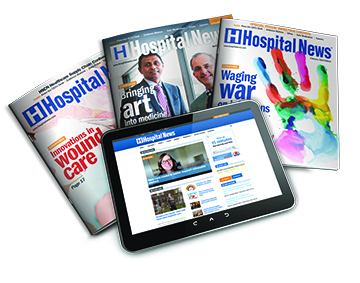Cheryl Ford has less to worry about since her mother Nancy Huyck, who lives alone with Chronic Obstructive Pulmonary Disease (COPD), has been using digital tools to track her vitals.
The information is made available securely to her care team, which includes Cheryl, who is her mother’s primary caregiver.
“I spend less time wondering how my mom is doing now, because all I have to do is log on and see for myself whenever I want,” Cheryl said. “The peace of mind it gives me is great, but the real value is in the changes I’ve noticed in her health since she started using remote patient monitoring tools at home. Problems are noticed earlier and dealt with before they become more severe.”
The South Central Community Development Corporation, the project’s sponsor, is working with Middlesex-London Emergency Medical Services (MLEMS) and 10 other community paramedic services across Ontario to provide the Community Paramedic Remote Patient Monitoring (CPRPM) program.
The digital health tools they place in the homes of patients enable them to measure their vitals including blood pressure, weight and oxygen levels. Paramedics, who intervene proactively when they note a change in an individual’s health status, monitor the information on an ongoing basis. The goal is to keep patients like Nancy as well as possible so they can remain in their homes, and out of the hospital. It is also an innovative way to provide real value to caregivers and loved ones.
According to Rick Whittaker, CPRPM Project Lead, the goal is being achieved. Patients like Nancy are experiencing a decrease in the need to go to the emergency department or walk-in clinics.
“The most expensive place to deliver health care is in the hospital, where few patients want to be, while the least costly place to provide care is in the home, where most patients want to be,” said Whittaker. “If the goal is to reduce health care expenses and improve the patient experience, I think investing in remote patient monitoring is a sure bet.”
When Nancy enrolled in the program, a MLEMS paramedic came to her home to teach her how to use the tools, and ever since, she has been measuring and transmitting her blood pressure, weight and oxygen levels every day. Readings that require follow-up are flagged, and a secure portal provides Cheryl and the rest of Nancy’s care team with up-to-date results.
“One day, mom received a call from the paramedic when her blood pressure was higher than usual,” said Cheryl. “He made an in-home visit to see her, and decided to get in touch with her doctor and they worked together to resolve the issue before I even knew there was a problem.”
“Avoiding a trip to the doctor was an obvious benefit,” added Nancy. “But getting to know my own results has taught me to make changes early on in order to avoid complications down the road, and that has been an added bonus.”
Michael Green, President and CEO, Canada Health Infoway, believes providing patients and caregivers like Nancy and Cheryl with digital health tools is key to improving access, patient outcomes and health system efficiencies.
“We can help reduce wait times in the emergency department for everyone by creating innovative ways to support patients like Nancy, so they can avoid going there in the first place,” said Green.
“Canadians have been quick to adopt these and other digital health tools that are fueling improved outcomes and health system efficiencies,” he added. “The vast majority of Canadians want access to digital health tools. Providing it to them and to their caregivers will enhance their health care experience, which leads to better outcomes.”
For Cheryl, that means less time worrying about her mother, and more time spent on activities they both enjoy, such as volunteering.
“Digital health is helping me be a more informed caregiver, and is supporting me so I can better balance my obligations with the time I spend enjoying my mother’s company,” she added.




